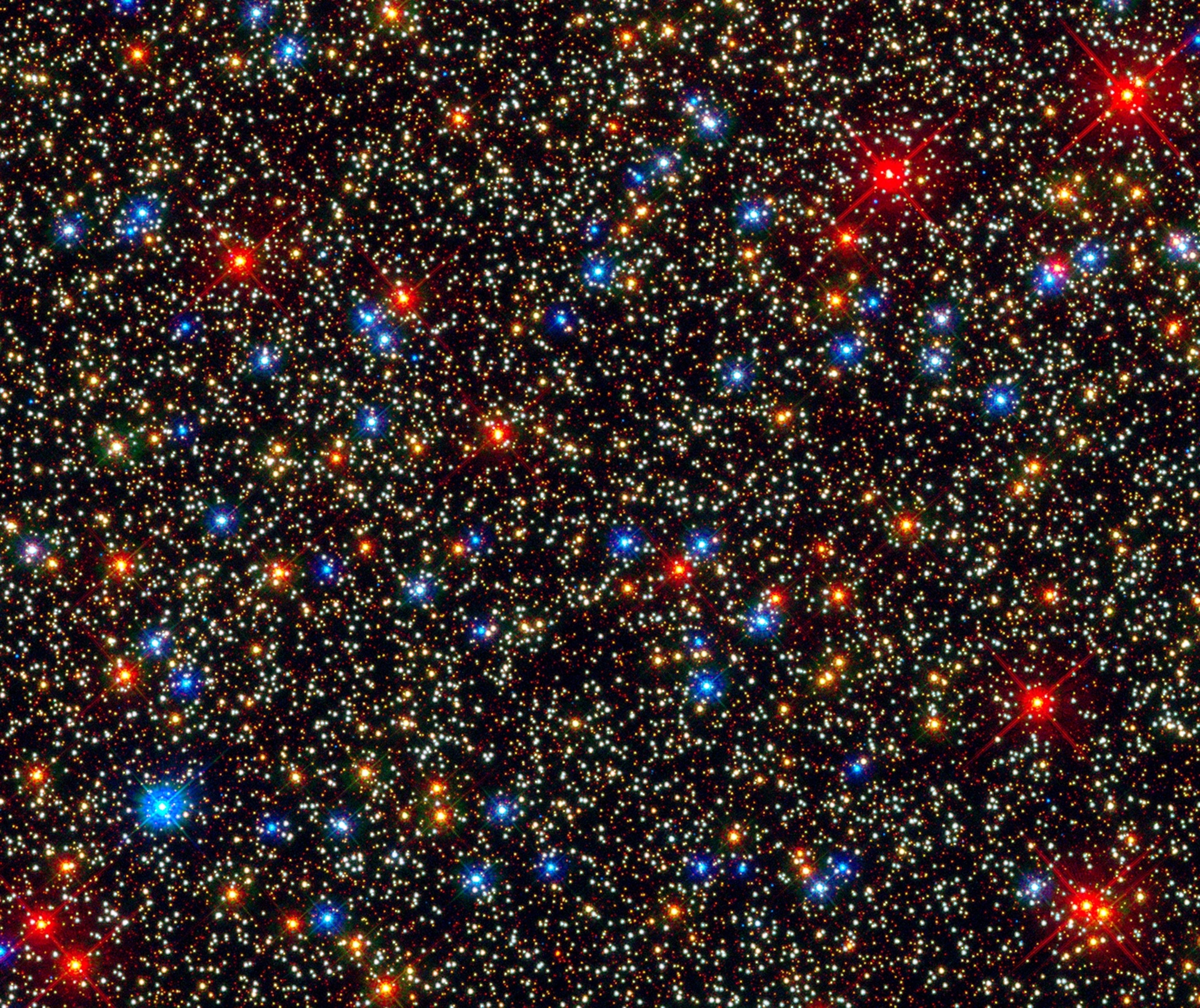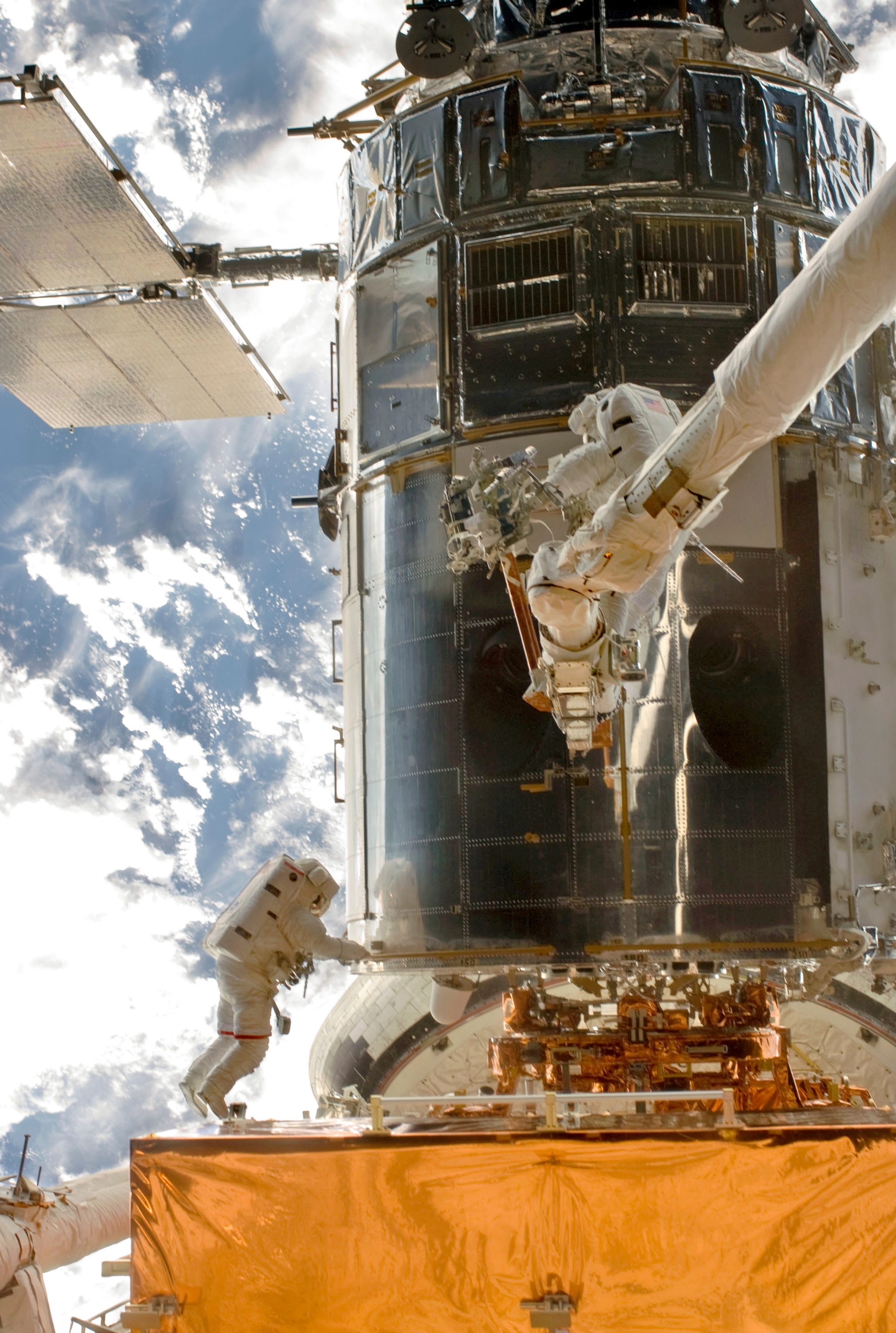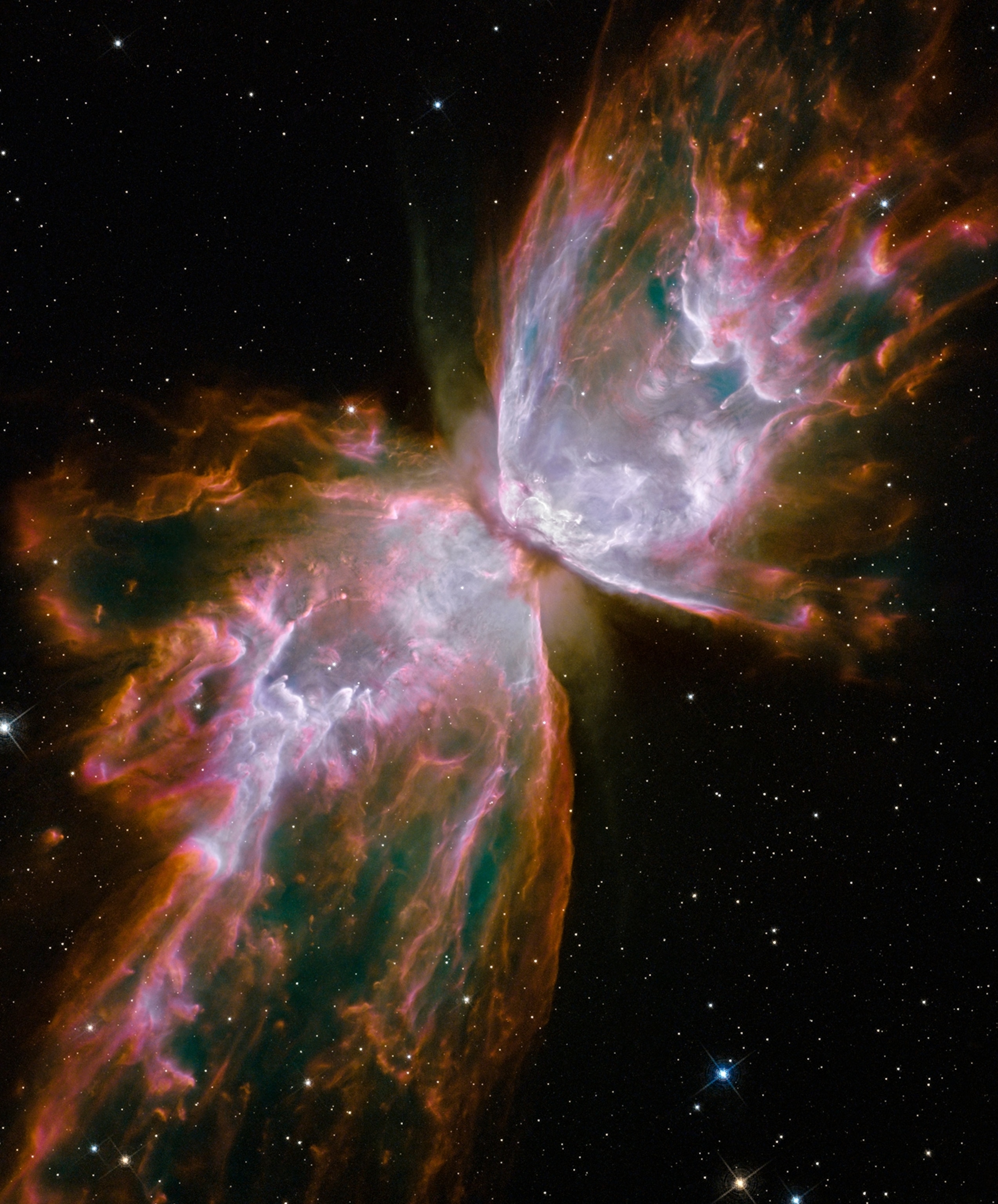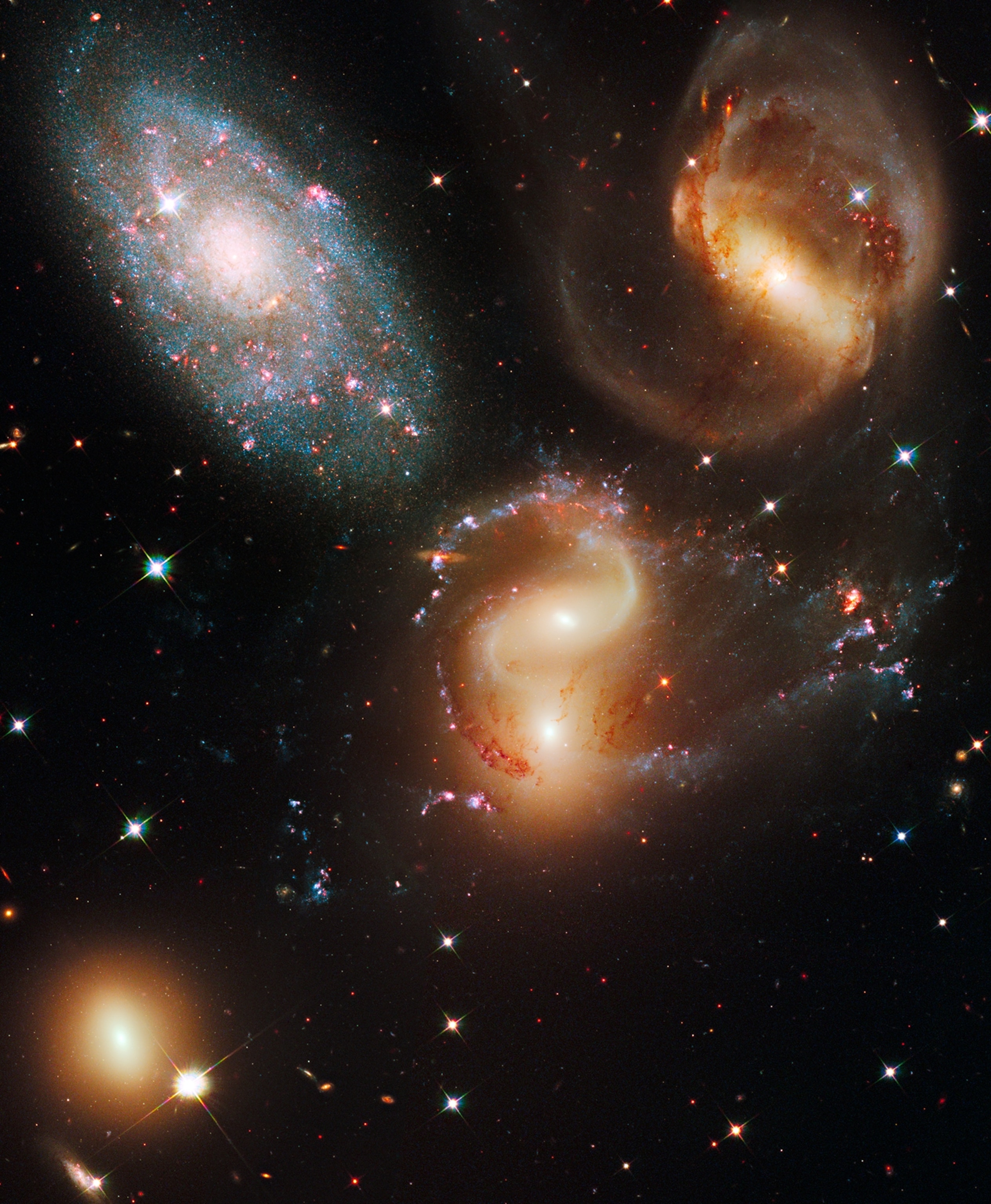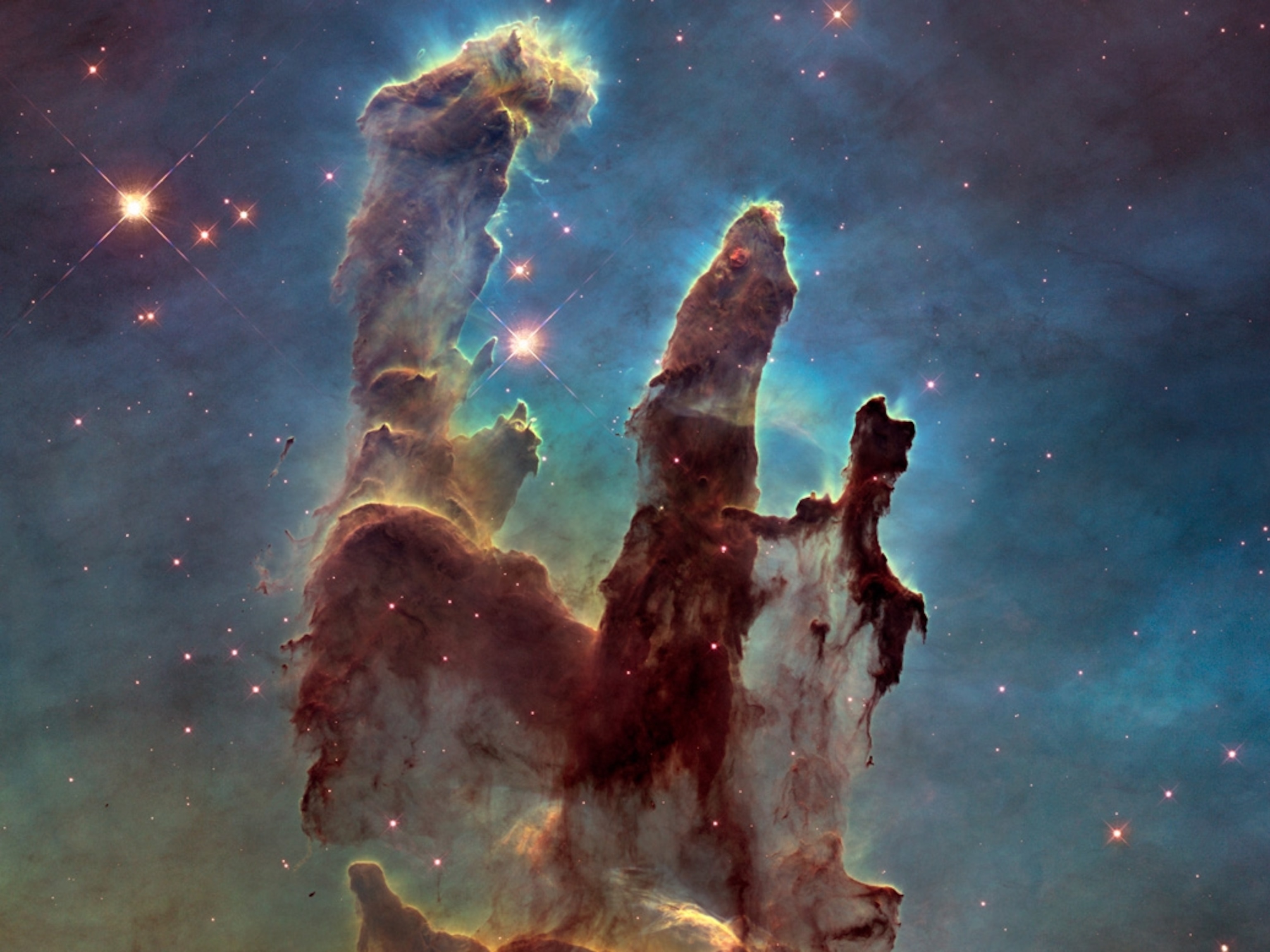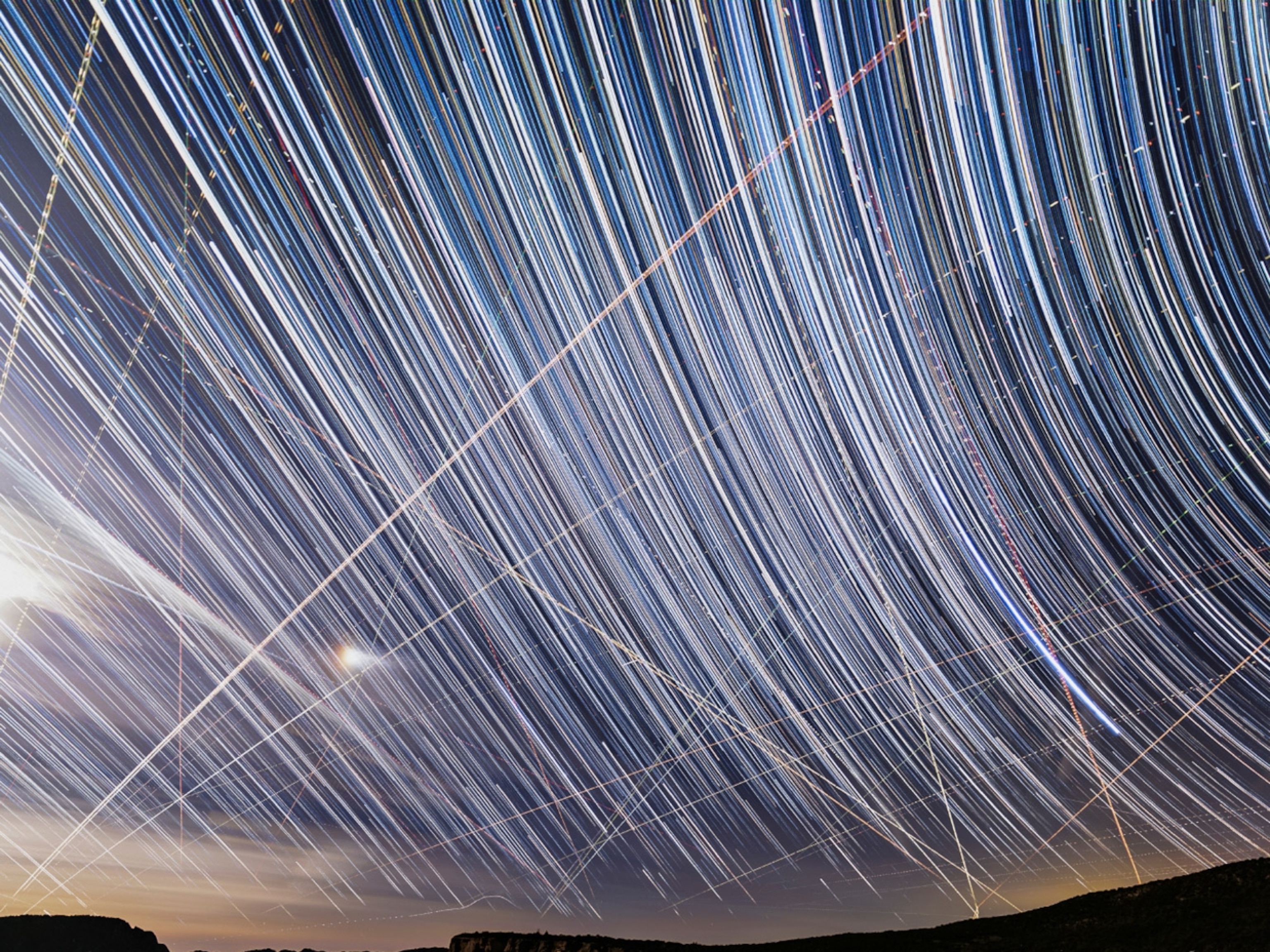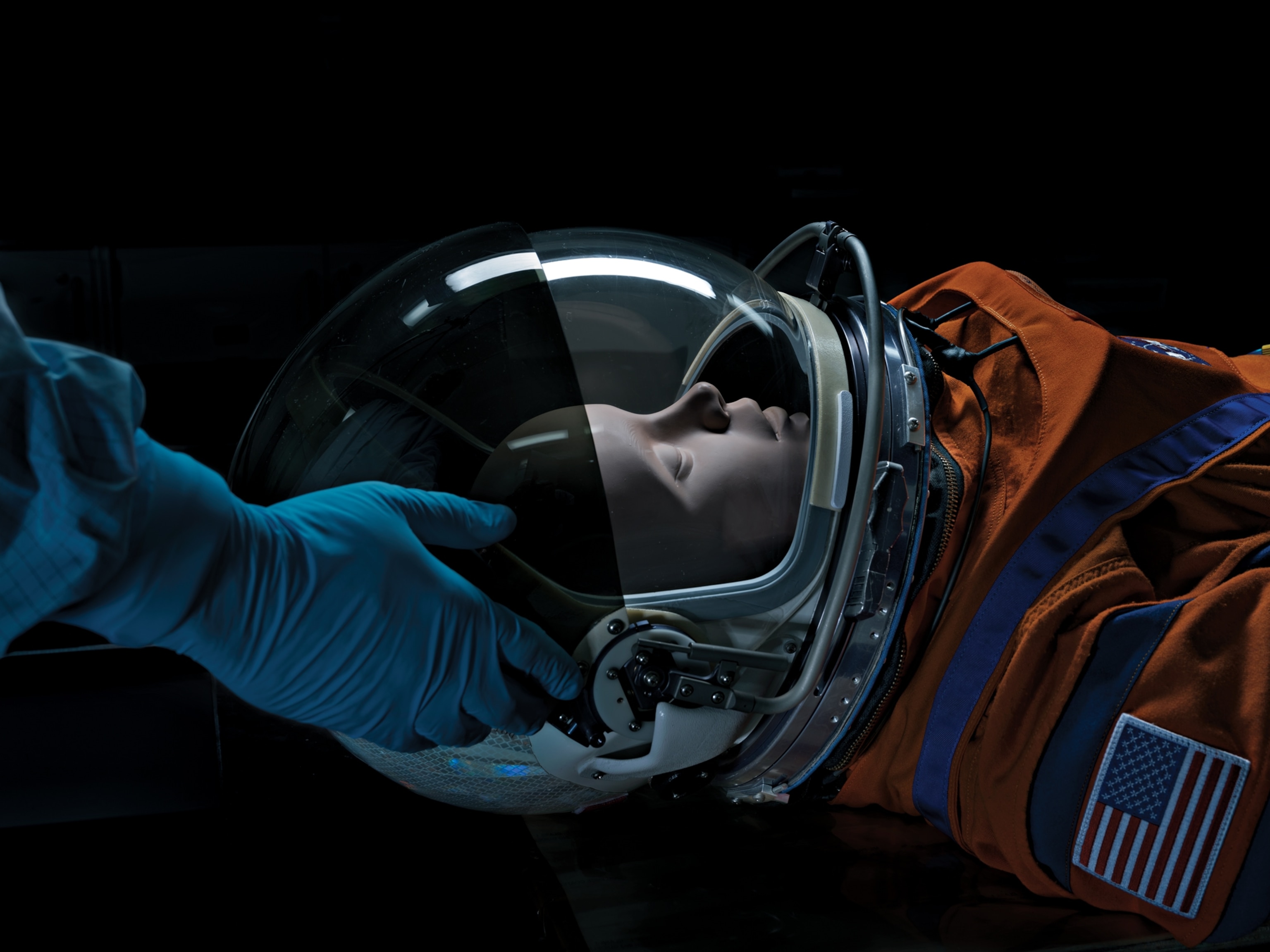Hubble Renewed
The telescope sees more clearly than ever.
Last May astronauts gave the Hubble Space Telescope what will likely be its final overhaul. The team, including spacewalker John Grunsfeld (above left), on his third visit to the orbiting observatory, repaired power and control systems to give Hubble several more years of life riding high above Earth's atmospheric haze. They also installed a new camera and spectrograph and repaired two other instruments to make the telescope more productive than ever. "The best times for this telescope are ahead of it," says Hubble Project Scientist Ken Sembach of the Space Telescope Science Institute. "The public is going to be amazed."
The signature images from Hubble, which turns 20 in April, show careering galaxies, exploding stars, eerie nebulae. With the telescope's greater imaging sensitivity and resolution, its new images will be even more spectacular.
And even more profound. Soon after the upgrades, Hubble took aim at a dark patch of sky, gathering infrared light for a total of four days to detect the very faintest objects. The images reveal blurry dots, "just a handful of pixels," says Garth Illingworth, a University of California, Santa Cruz, astrophysicist. The dots, analyzed by computer to rule out camera artifacts, are images of objects that are among the most distant, and thus most ancient, ever seen—small, bloblike early galaxies shining 13.1 billion years ago. The universe itself is but 13.7 billion years old. "The new camera has pushed the frontier a few hundred million years closer to the beginning," Illingworth says. In its final years Hubble is seeing back almost to the beginning of time.


